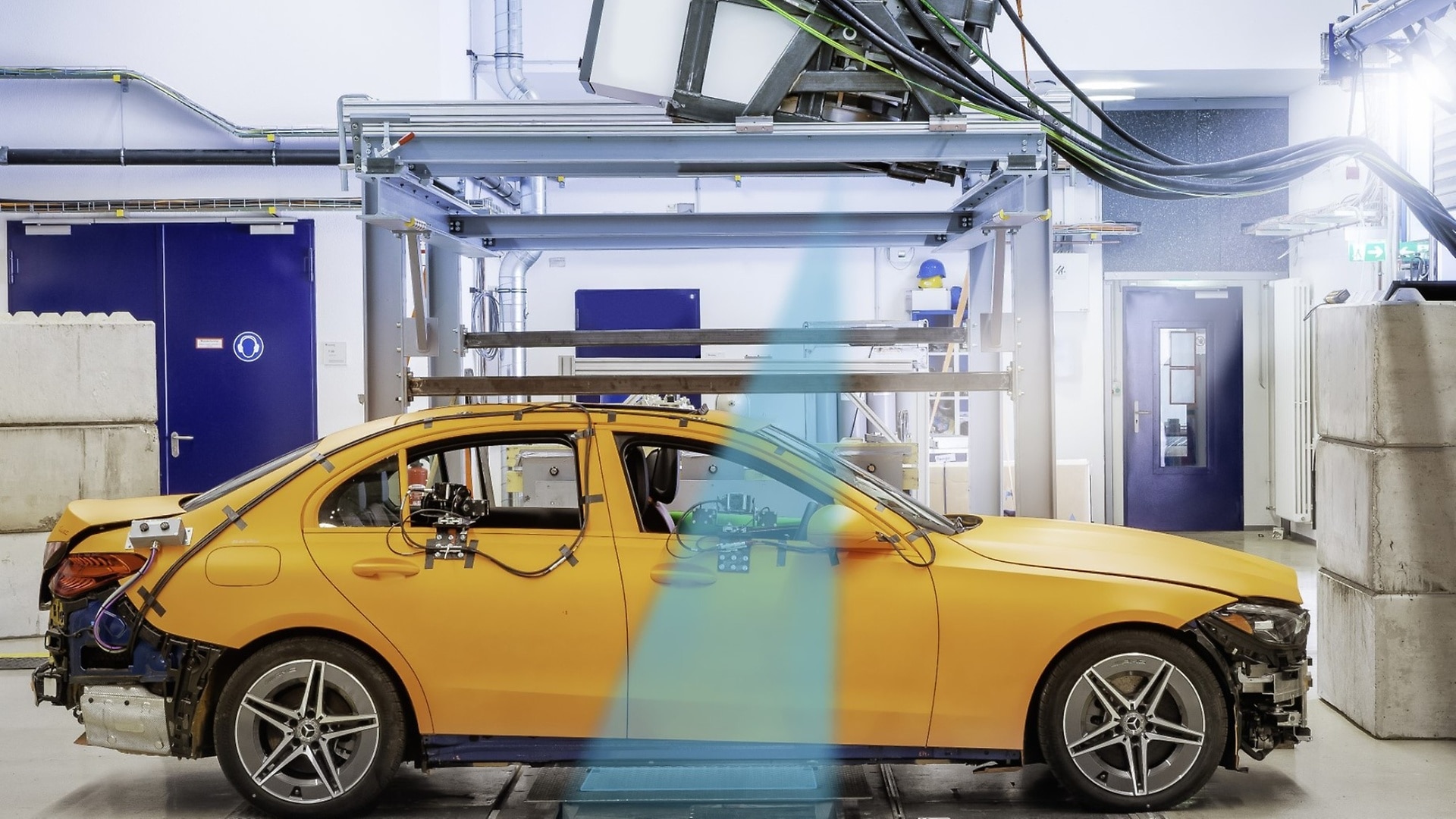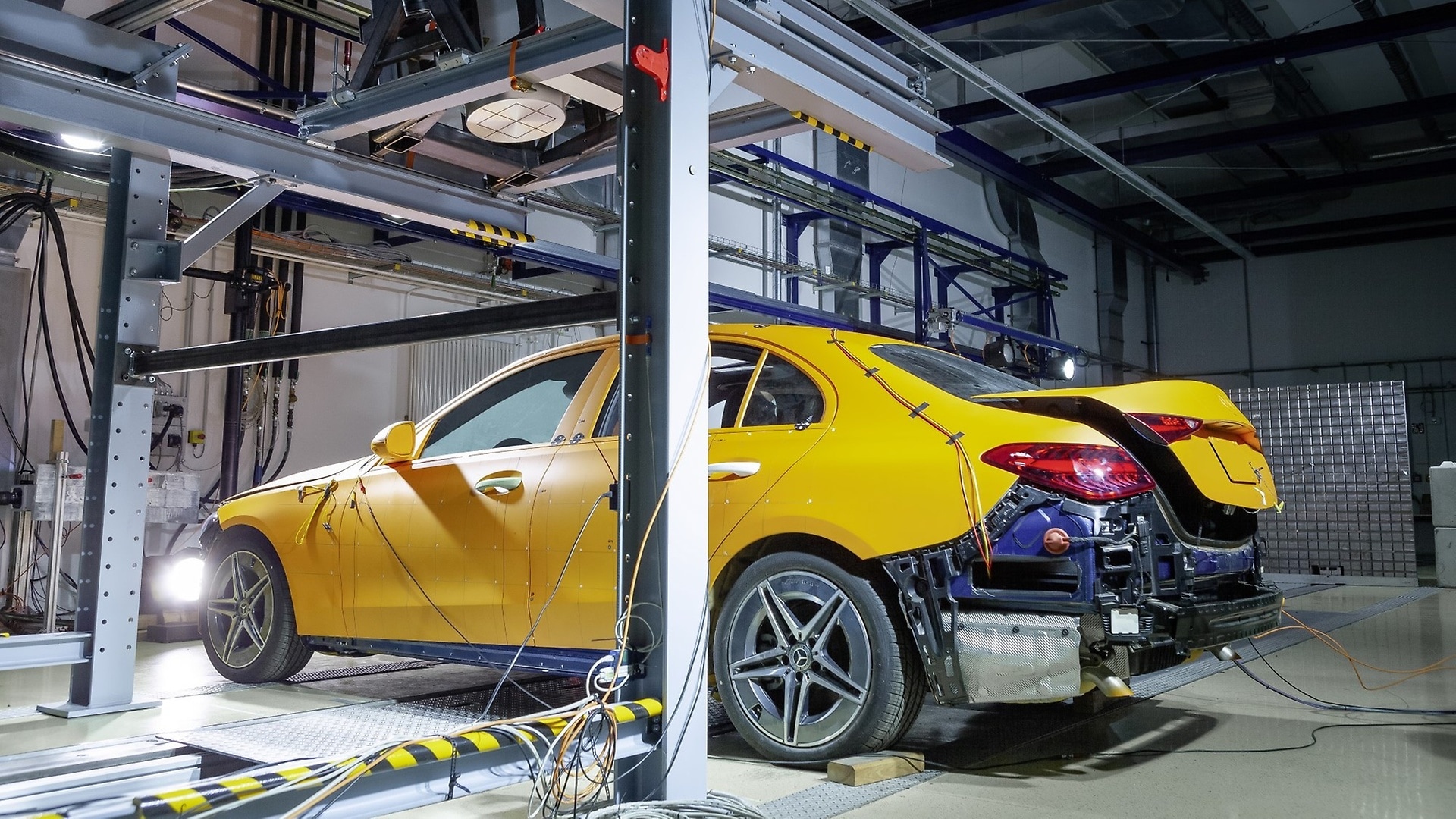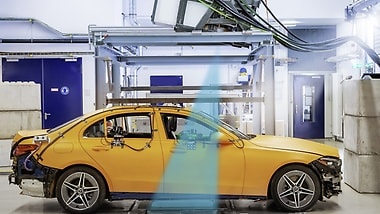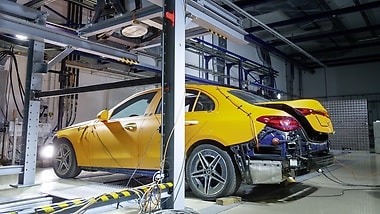For several years, the Mercedes-Benz vehicle safety division has been researching the use of X-ray technology in crash tests together with colleagues from EMI. The decisive factor for the breakthrough was the use of a linear accelerator with 1 kHz technology as the radiation source. The device is far more powerful than the X-ray flashes previously used in trials: The photon energy of the linear accelerator is up to nine megaelectron volts. This allows all materials commonly used in vehicle construction to be screened. The duration of the X-ray pulse is only a few microseconds. This makes it possible to record deformation processes in the crash test without motion blur. The linear accelerator also generates a continuous stream of these X-ray pulses. This means that up to 1,000 images per second are possible. That is about 1,000 times as many as with conventional X-ray procedures.
During the crash test, the beams shine through the bodywork and any dummies from above. A flat detector is located under the test vehicle. It serves as a digital image receiver in the X-ray system: When the radiation hits the detector, an electrical signal is generated. The intensity of this depends on how strongly the radiation was previously absorbed by the vehicle and dummy structure. This influences the grey value that is later visible – similar to the X-ray inspection of luggage at the airport or images of this kind taken by a doctor.
In the milliseconds of the actual impact time, the X-ray system shoots around 100 still images. Combined into a video, they provide highly exciting insights into what happens inside safety-relevant components and in the dummy's body during a crash. In this way, it is possible to observe in detail how the thorax of the dummy is pressed in or how a component is deformed. The important part on the way from research to industrial application is the fact that the X-ray crash does not affect any other analysis tools. Even the interior cameras in the crash test vehicle record without any disturbance.
The EMI experts drew up a comprehensive radiation protection concept for the X-ray crash. Dosimeters are used as monitors to ensure that employees are not exposed to radiation. The government authority has approved the operation of the plant in accordance with legal requirements. The elaborate physical protection measures include an additional 40-centimetre-thick concrete wall around the building and a protection door weighing around 45 tonnes.
,xPosition=0,yPosition=0.5)




,xPosition=0.5,yPosition=0)
,xPosition=0.5,yPosition=0)